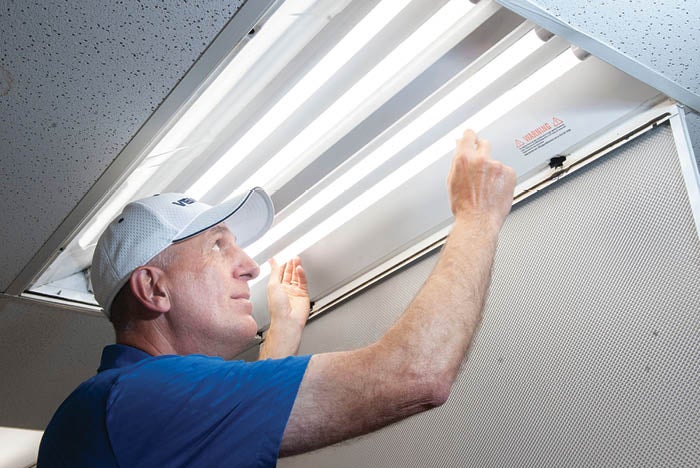Hospital lights the way to savings

Mission Community Hospital replaced its lighting with energy-efficient LED lighting to improve operations.
Image courtesy of Venstar Inc.
When Mission Community Hospital, Panorama, Calif., set out to reduce its energy costs, the hospital’s health care consultant, Hallsta, Los Angeles, recommended that the hospital tackle some low-hanging fruit first.
Mission Community Hospital was spending $2 million annually on lighting costs for not only its hospital, but also acute care facilities, clinics, a medical office building and parking structure. After switching from old fluorescent tubes to LED lighting, the hospital estimates it will save $350,000 annually, which will reduce energy costs by $1 million in less than three years.
The hospital contracted Venstar Inc., Chatsworth, Calif., to upgrade its facilities with LED lighting and was able to take advantage of a rebate from the Los Angeles Department of Water & Power to get subsidized rates on the products and installation.
The hospital and acute care facility were previously utilizing 28-watt fluorescent tubes, which were replaced with 12-watt LED tubes for energy savings and a brighter, more comfortable environment.
For the medical office building, the hospital removed the original T12 34-watt fluorescent fixtures and replaced them with 12-watt LED tubes. This created a more comfortable lighting environment for health care workers and patients. The parking structure previously had a mix of 55- to 100-watt fluorescent fixtures that were replaced with vapor-tight, 12-watt LED lamps, providing a brighter, safer environment.
In addition to saving on energy costs, the new fixtures will help Mission Community Hospital reach a number of other energy-efficiency and other goals outlined for the project.
All the new lighting fixtures are self-contained, which eliminates the need for ballasts, helping to greatly reduce maintenance requirements. The project also improves the facilities’ quality of light with soft bright LED lighting, and eliminates the heat of fluorescent lighting to help curb air conditioning costs.
Making the switch means the hospital also eradicates the hazards of staff having to handle magnetic ballasts and fluorescent tubes. Finally, the hospital says it can take the savings from this project and direct it back to its mission of patient care.




